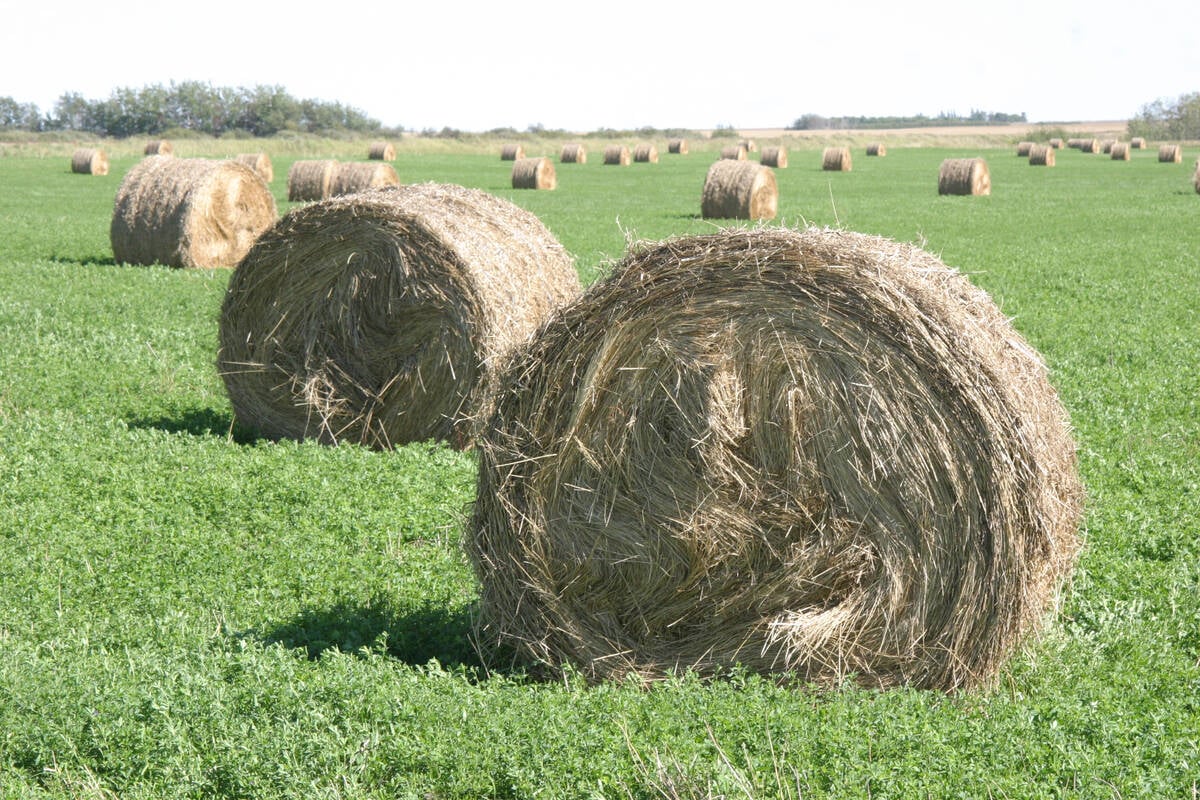PHOENIX, Ariz. – For 51 weeks in 2003, the United States beef industry enjoyed record profits in every sector.
When a single case of bovine spongiform encephalopathy was discovered in Washington state Dec. 23, prices plummeted for a short time.
Although U.S. cattle prices have returned to pre-BSE levels, the market has become volatile, with prices swinging by $10 US per hundredweight in one week.
“None of us have ever experienced anything like that,” said Randy Blach, executive vice-president of the market analysis firm, Cattlefax.
The annual Cattlefax report to the National Cattlemen’s Beef Association convention Jan. 29 presented a cautious scenario for 2004.
Read Also

Breaking down successful winter feeding into six steps
It’s that time of year when it is important to start planning for a cow herd’s winter feeding program. Here are six steps I think are necessary to consider when getting your feed tested.
Margins will be tight, particularly for feeders, and are most likely to hover around the breakeven point because of surplus beef, high corn prices and general market uncertainty.
But America’s beef industry is in a good position to weather the storm. Cattle numbers are lower than normal, prices remain strong and consumer demand never wavered.
Cow-calf profitability should hold for the next 12-24 months but no one expects much herd expansion because of the uncertainty. No one knows when world markets will reopen.
The situation is most uncertain for the feeding sector.
“We won’t see the profit at the fed level. We expect it closer to breakeven,” said Blach.
With no export market, value will be lost from every carcass. This value loss comes from not being able to sell some of the products now considered specified risk materials. Many of these products were shipped to foreign markets.
Last year the U.S. exported 48 million pounds per week. That was equivalent to 60,000 fed cattle.
While domestic prices have been good lately, they could have been better.
“Cattle prices would have been $13 higher if this had not happened,” said Blach.
Last year saw record U.S. beef production of 26.2 billion lb. at a time when chicken and pork supplies were already at high levels. Blach predicted 25.7 billion lb. will be available for 2004.
Much of last year’s extra beef came from the high number of heifers placed in feedlots. Last year 5.5 million heifers were on feed.
Feedlots have actually been hard pressed to find cattle. Expected Canadian imports did not materialize after the May 20 BSE case shut borders. About 1.3 million Mexican head offset the loss of the Canadian feeders.
An additional challenge is sorting through the available beef by age and quality.
Cattlefax estimates 28.6 million animals are in the under 30 month category. These are the high end fed cattle likely to grade well and fetch a better price.
About 420,000 may fall into the B maturity category.
In a normal year there are about 195,000 downers, of which 50,000 get condemned.
While there is general uncertainty on the production level, consumer demand kept prices high for every sector.
“If beef demand had not improved in 1999, by this time we would have been talking about prices at $60,” said analyst Mike Miller.
Retail prices are expected to remain strong because of the continuing demand for high quality Choice cuts. However, more beef features are anticipated at retail to keep the excess supply moving.
Last year, marketings were current as animals moved to market at the right time and weight, but as cattle start to back up, this will be lost, said Cattlefax analyst Kevin Goode.
Last year packers pulled forward 20 percent of inventory every month to meet beef demand. Steer weights were under control and carcasses were 16 lb. lighter than the year before. This level of demand and currentness made 2003 a record year for the feeding industry with an average profit of $148 per head.
For 2004, Cattlefax predicts 750 lb. steers to average 88-90 cents per lb. while 550 lb. calves will be $1.04-$1.07. Depending on developments, prices could sink below that.
The cow market is expected to rest at around 48 cents over the year. Fewer slaughter cows will be available because there are no Canadian imports and American producers are less likely to sell them this year.
Bred cow prices are expected to hold.
The corn market could skew calf prices.
Last year, 85.4 million acres of corn were planted, producing a record harvest of 10.1 billion bushels. High demand for feed and ethanol production has shorted the corn carryover.
Corn could top $3 per bu. if ending stocks drop to less than 800,00 bu.















